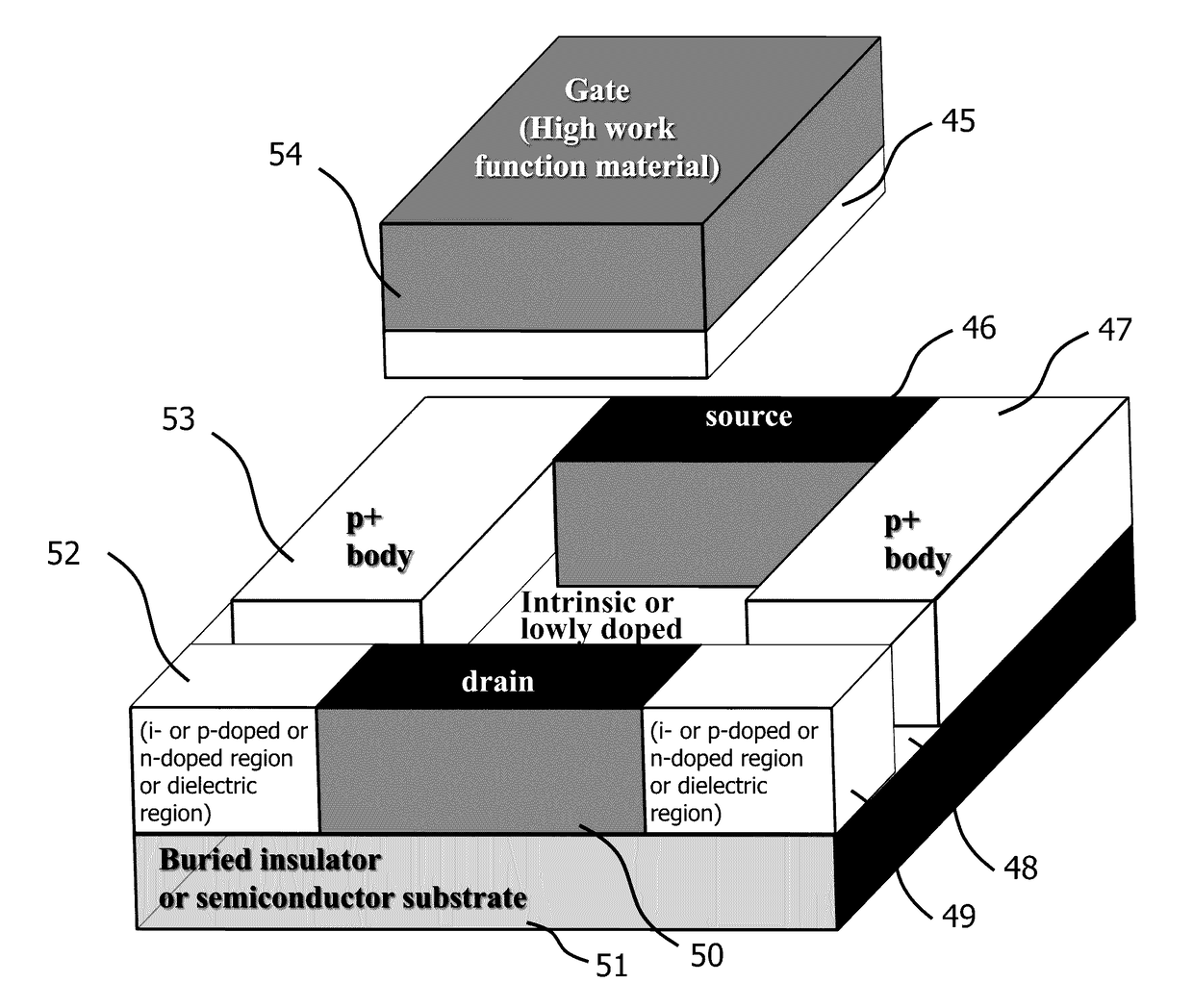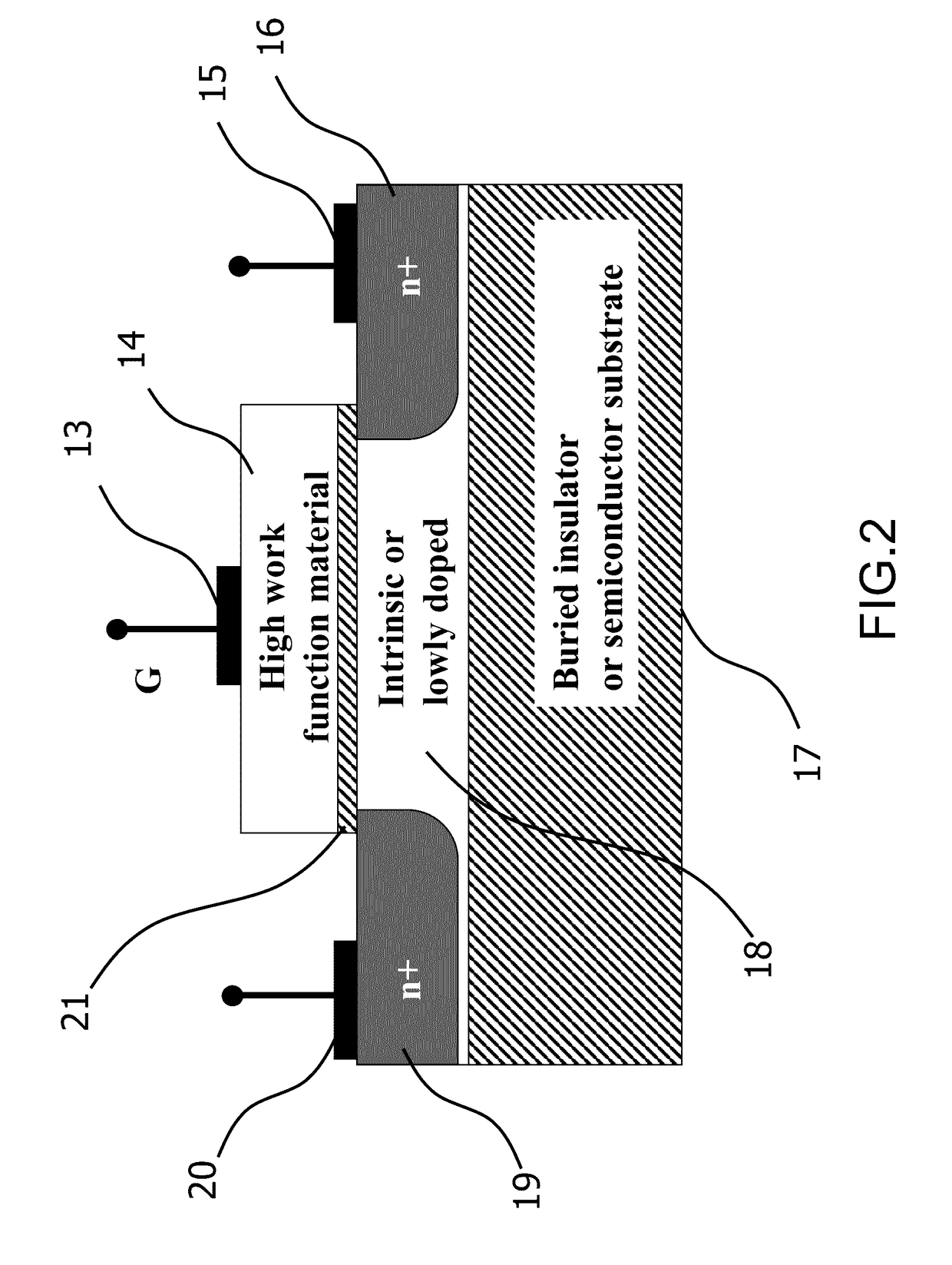Body tied intrinsic fet
a technology of intrinsic fet and body, which is applied in the direction of semiconductor devices, electrical apparatus, transistors, etc., can solve the problems of increasing the threshold voltage variation to unacceptable levels, short-channel effects, and expected increase in threshold voltage variation, so as to reduce the random dopant fluctuation phenomena, reduce the impurity and surface scattering phenomena, and reduce the effect of doping profil
- Summary
- Abstract
- Description
- Claims
- Application Information
AI Technical Summary
Benefits of technology
Problems solved by technology
Method used
Image
Examples
Embodiment Construction
A FIG. 1
[0067]FIG. 1 is showing the first embodiment of the present invention. Regions 2 and 7, which can be made in n+-type semiconductor or metal, define the drain and the source of the transistor. The region 1 corresponds to the gate-oxide, and the region 8 is a buried dielectric layer if the device is manufactured in SOI technology or the semiconductor substrate of the device if this is implemented in bulk technology. The gate region 12, which can be built in metal or poly-silicon, forms the gate of the transistor. Differently from a conventional MOS device where the channel region is p-doped and the gate is made in n+-doped poly-silicon or with a low work-function metallic material, the channel region 5 of this embodiment is maintained intrinsic (or near intrinsic), and the gate 12 is formed with a high work-function material.
[0068]The present invention therefore defines a MOS device with a higher carrier mobility, which leads to a significant improvement of the device performa...
PUM
| Property | Measurement | Unit |
|---|---|---|
| energy-gap | aaaaa | aaaaa |
| semiconductor | aaaaa | aaaaa |
| insulating | aaaaa | aaaaa |
Abstract
Description
Claims
Application Information
 Login to View More
Login to View More - R&D
- Intellectual Property
- Life Sciences
- Materials
- Tech Scout
- Unparalleled Data Quality
- Higher Quality Content
- 60% Fewer Hallucinations
Browse by: Latest US Patents, China's latest patents, Technical Efficacy Thesaurus, Application Domain, Technology Topic, Popular Technical Reports.
© 2025 PatSnap. All rights reserved.Legal|Privacy policy|Modern Slavery Act Transparency Statement|Sitemap|About US| Contact US: help@patsnap.com



